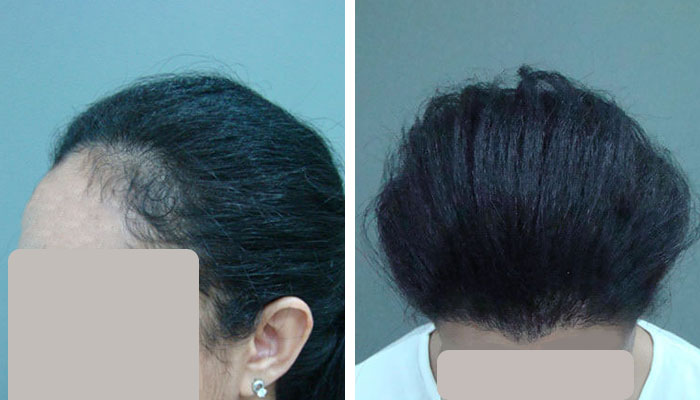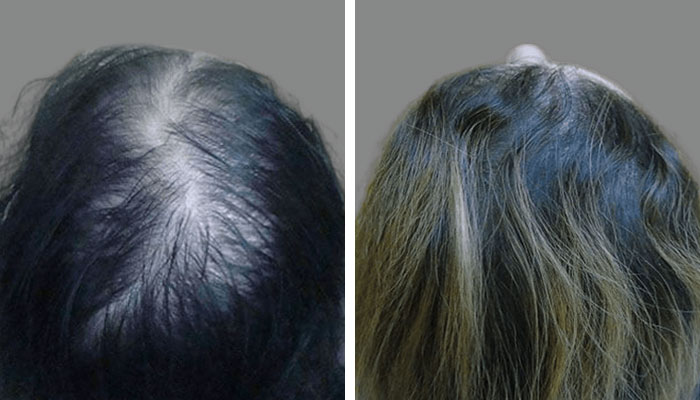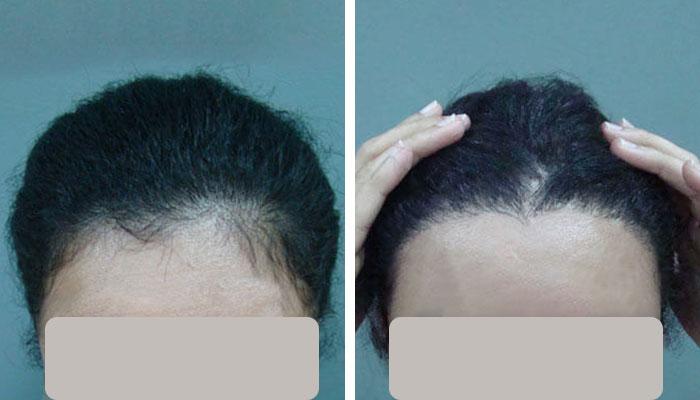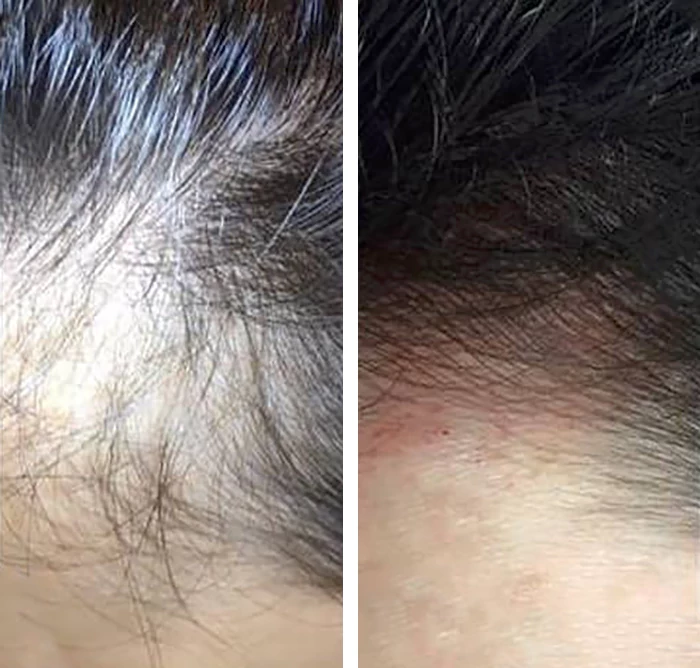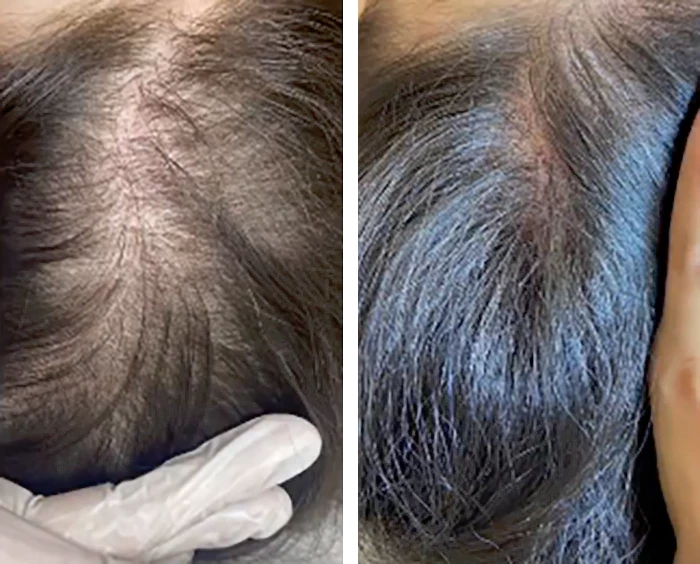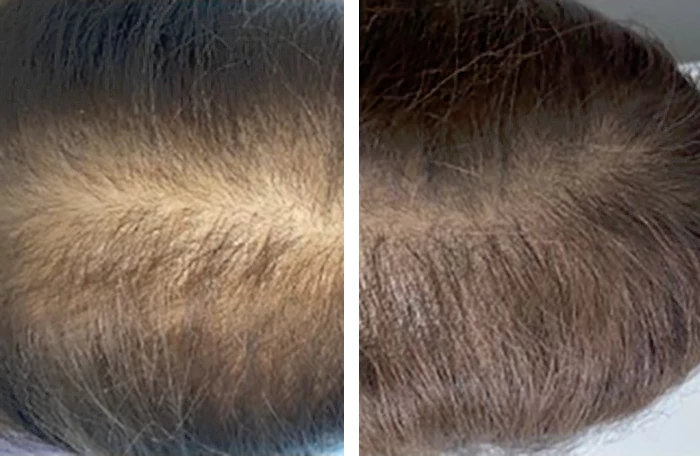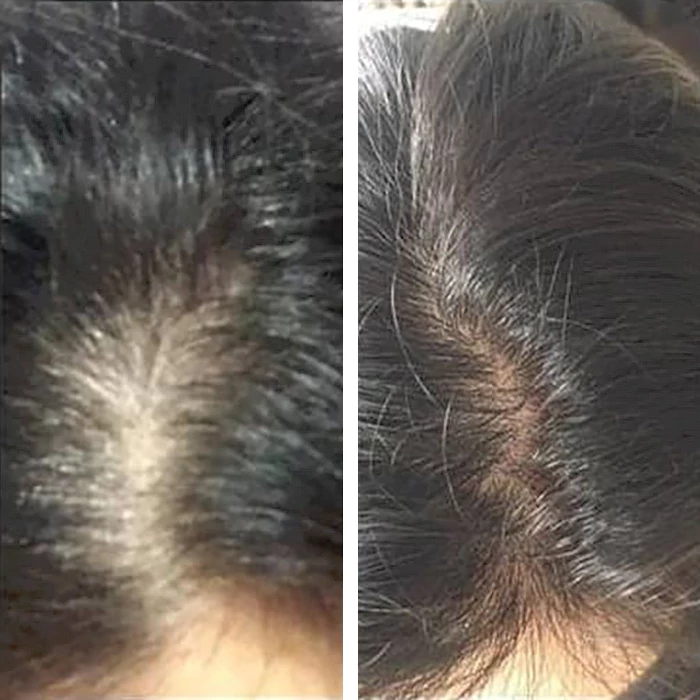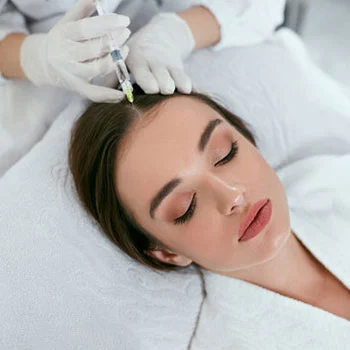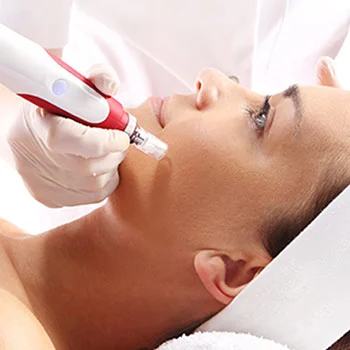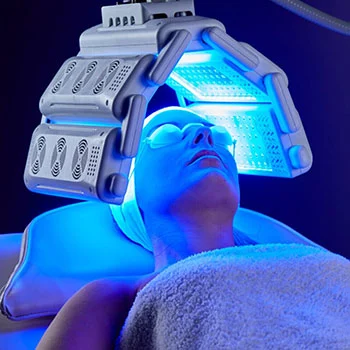Introduction
While doctors first used platelet-rich plasma therapy in the 1970s to treat blood conditions, it subsequently gained wide popularity in sports medicine and orthopedics. However, as the knowledge about PRP expanded, doctors adopted it for tissue regeneration, wound healing, skin rejuvenation, and scar revision, but more importantly, to treat alopecia — hair loss for any reason. That is why in this article, we look deeper at PRP for hair loss and see if the procedure is worth your time and money.
What Is PRP for hair loss?
PRP is a relatively simple medical procedure in which a person’s blood is drawn, processed in a device, and then injected into the required area, i.e., the scalp, to prevent hair loss and promote hair regrowth. It is commonly used to treat androgenic alopecia, also known as male (or female) pattern baldness. While PRP can be performed alone, it is usually combined with other hair loss treatments, such as medications, to get the benefits.
PRP is rich in growth factors and platelets (a major source of growth factors and other substances) and naturally promotes cell growth and proliferation, tissue repair, and wound healing, as well as influences the reactivity of other blood cells and blood vessels. As a result, experts believe PRP prevents hair loss and promotes regrowth by directly stimulating the hair follicles and increasing their blood supply. However, PRP may only work for some types of hair loss (1).
So, Who Can Benefit From PRP?
Platelet-rich plasma therapy usually works best for people in the early stages of hair loss and still have plenty of dormant hair follicles in their skin. However, if you are already bald, PRP might not be effective. In addition, your skin condition is also important, as having skin problems, such as frequent sunburns, also decreases your odds of seeing the benefits.
Furthermore, your overall health condition plays a significant role. If you have any medical condition, such as anemia (lack of red blood cells), cancer, immunodeficiency, or a blood disorder, you might not be a good candidate for this procedure. To add more, most of the evidence so far supports its use for androgenic alopecia (male or female pattern baldness). So if you have some other condition, PRP may not work for you (2).
That being said, reach out to your doctor for more information. Every individual is unique, and consulting a hair specialist is always a good idea.
How Is PRP Done?
Platelet-rich plasma therapy is a relatively simple procedure, and for this reason, it can be easily performed in a doctor's office. The procedure usually takes around 30 minutes to an hour and consists of the following steps:
- A health professional draws about 10 to 30 ml of blood from your arm for the procedure.
- The blood is then placed in a laboratory machine called a centrifuge, which spins very quickly and separates different blood components based on density. It takes about ten to twenty minutes, resulting in three layers: platelet-poor plasma, platelet-rich plasma, and red blood cells.
- The lab technician takes this PRP, draws it into a syringe, and hands it to the doctor for an injection.
- Your doctor then injects the PRP into the required area of your scalp.
Sometimes, in addition to natural growth factors present in your blood, synthetic growth factors may also be added to the PRP.
How To Prepare For The PRP Session?
A PRP session is a simple outpatient procedure, so you don’t need much preparation. However, there are still some steps you need to follow beforehand. For example, heavy drinking or smoking before the procedure can disqualify for the procedure as they lead to a lower than normal platelet-rich count. In addition, stop using any hairspray product or gel at least two to three days before the PRP session.
While, in most cases, a numbing agent is usually mixed with the PRP injection itself, sometimes, the doctor intends to apply topical numbing lidocaine solution to the scalp before the infusion, which requires you to arrive early. That is why consulting your doctor ahead of time is so important.
How Is PRP Recovery Like?
Besides experiencing a few side effects, such as swelling or pain, PRP is a safe procedure. You can continue your daily life activities without any interruption. However, you may not notice any change in your hair density for many months. In addition, it takes many PRP therapy sessions for a person to see the results. Consult your doctor for information regarding PRP recovery.
What Are The Risks And Compilations Of PRP For Hair Loss?
Since the doctor uses your own blood to extract the platelet-rich plasma, PRP for hair loss is usually free of any adverse consequences. However, sometimes the doctor may injure a nerve or a blood vessel in the scalp. Some people also experience a headache, itching, or temporary bleeding at the injection site. In addition, an infection, calcification, or scar formation may also occur.
Furthermore, you may develop allergy symptoms if you are allergic to the anesthetic used in the PRP injection. Similarly, if you suffer from any medical condition, such as diabetes, an immunodeficient state, or a blood disorder, your risk of side effects increases. That is why letting your doctor know about your anesthetic tolerance or health in general in advance is so crucial.
What Is The Cost Of PRP For Hair Loss?
The cost of PRP for hair loss depends on many factors, such as the clinic's location, the doctor's experience, and the quality of equipment used. In addition, PRP therapy for hair usually consists of three sessions — one every two weeks — over a period of one and a half months. To add more, you will need maintenance treatment every six months to stabilize your hair density. Thus, the overall cost can end up a lot more than expected.
In general, the price of a simple PRP injection starts at around $400. Thus, the minimum cost of PRP for hair loss is about $1200 in the US. However, it increases depending on your location and your doctor’s experience and may go as high as $3500. Likewise, the cost may increase further if you ask for additional nutritive components, such as more growth factors.
Unfortunately, PRP for hair loss is considered a cosmetic procedure, not a medical one. As a result, most insurance providers do not cover the cost. However, check with your insurance provider to see if they cover the cost before paying from your own pocket.
Is PRP For Hair Loss Effective?
Now to the final question, is PRP for hair loss worth it? Well, the answer to this question depends on many factors. First, you need to see if you are a good candidate and if your health allows you to get the procedure. If yes, then you need to see the stage of your hair loss, as PPR is only effective in earlier stages. Third, even if you check for the first two, you need to keep expectations real as it is not a magic solution, and the results are not guaranteed.
That said, PRP for hair loss is not a hoax either; instead, it is supported by plenty of evidence. For example, a meta-analysis of 11 clinical trials showed that PRP therapy reduces hair fall and increases hair density as well as diameter. In addition, a 2020 literature review published in the Journal Dermatologic Surgery advocates using platelet-rich plasma in 3 to 4 monthly sessions to treat hair loss. Similarly, the authors of another review featured in the International Journal of Women’s Dermatology also consider PRP a potential treatment for hair loss.
Furthermore, when compared with other procedures, PRP has many advantages. For example, it is relatively easy, has fewer side effects, recovery is fairly quick, and costs less than a hair transplant. So is PRP for hair loss worth it? Probably, yes. However, you need to check with your doctor to get a satisfactory answer. Besides providing reliable insight into your particular condition, your doctor may offer better or different ways to use PRP, such as combining it with other treatment options like medications.


